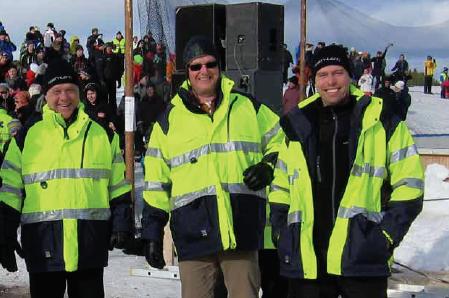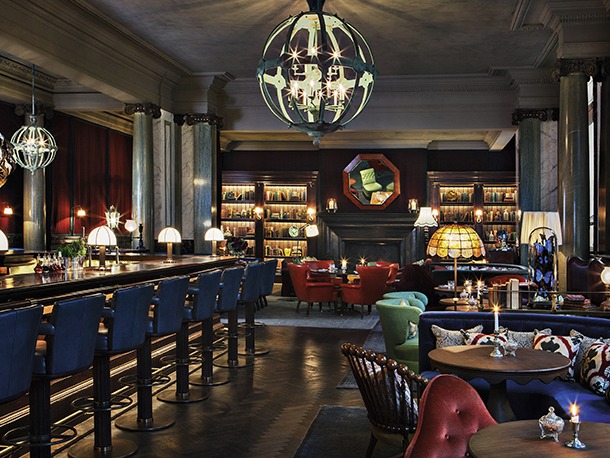
Mining is never an easy life but as Alan Swaby learns, not even the harshness of the Arctic Circle can faze some operators.
You might be forgiven for thinking that developing a brand new iron ore mine, well inside the Arctic Circle, might throw up the odd problem or two. But Karl-Axel Waplan, CEO of Northland Resources, is remarkably matter-of-fact about a project that will have consumed at least US$700 million by the time it gets off the ground.
“The beauty of working in Sweden,” he says, “is that we know exactly what we are dealing with. Unlike many mining locations, the government is stable, rules and regulations are already laid down and fixed in place and—particularly relevant in our case—Swedish people have a history of working in such harsh northern climes.”
The location in question is Kaunisvaara. It wasn’t the first place Northland looked when it first went to Sweden in late 2003—the year the business was established as a junior Canadian exploration company. The original aim was to look for copper and gold deposits in an option agreement covering the Barsele project. A year later Northland acquired a package of prospective mineral concessions through an agreement with Anglo American and in addition, staked its own mineral concessions in both Sweden and Finland. Fortunately, the management of the company had sufficient flexibility to follow different leads which eventually took them to Kaunisvaara and rich deposits of iron ore—some 800 kilometres north of Stockholm and 100 kilometres north of the Arctic Circle.
With demand for iron once again high and producing record prices, the economic woes of the past few years have worked in Northland’s favour. “In 2007 we raised $170 million,” says Waplan, “which has seen us through both the initial exploration and subsequent feasibility study stages which demonstrate the viability of the mine—something many other iron ore mining projects have had to defer until the financial markets freed up again. Late last year, on the strength of what we already knew, we raised another $250 million which will pay for the infrastructure and initial development of the site.”
Even the balance of the $700 million needed to get the plant on stream has been negotiated with a consortium of three banks and with Caterpillar, which is providing two open cast mining shovels and an eventual fleet of twenty 230-ton trucks.
In the meantime, preparing the site of the mine involves quite a degree of work. New roads have to be built across a landscape comprising bog land. Fine in winter when everything freezes solid but a liquid unworkable nightmare in summer. The whole area has to be contained by earthworks and then pumped dry. The underlying peat can then be stripped and either stockpiled to be replaced at the end of the mine’s life or possibly even sold commercially.
The mine itself will be in three parts—two open cast pits about five kilometres apart and between them the processing plant. Ore will be dug out by Caterpillar shovels and then trucked to a conveyor system feeding the crushing and milling plant. Here the ore will be reduced to <40 micron and then separated magnetically until an upgraded concentrate of about 69 per cent iron is achieved.
Commercially, the output at Kaunisvaara is an attractive proposition for customers. The combination of high grade magnetite material with few impurities and from a stable and reliable supplier is just what European smelters want.
Markets year round are assured because both Sweden and Finland combine forces to keep the Arctic waters open, so that bulk ore can be shipped south and there is never an issue with non-delivery. As such Waplan feels that his mine is in no way competing with the bulk mining operations of Australia and Brazil.
Kaunisvaara is the most advanced of Northland’s projects and with a good following wind should be in production this time next year. “From a mining point of view,” says Waplan, “the project holds no insurmountable obstacles. The major challenge we face is the tight schedule we have set ourselves.”
The workforce is steadily being increased from its present level of 75 to the point where around 450 will be needed when in production. Based on the preliminary economic assessment, the mine will be able to produce five million tons per annum of iron ore concentrate from a feed rate of 12.7 million tons of mined ore. At this rate the mine should have a working life of 24 years.
In addition to Kaunisvaara, the search is on for viable deposits in what is generally known as IOCG systems: iron-oxide-copper-gold. Examples of IOCG deposits include the well known Olympic Dam mine in Australia and the huge Kiruna magnetite body in Sweden which has been mined for iron ore for close to 100 years, having taken most of the original two billion tonnes of magnetite ore.
As well as new exploration, 40 kilometres away from Kaunisvaara across the border into Finland, Northland is breathing new life into a former producing mine located at Hannukainen near a rail line at Kolari. A preliminary economic assessment has been completed and the resource statement is being updated as new deposits not in the PEA have been identified. The PEA envisages Hannukainen beginning production in 2014 at a planned production rate of two million tonnes per year of iron concentrate at approximately 69 per cent, with additional bonus returns stemming from a copper/gold (Cu/Au) concentrate which is a by-product of the iron processing. The Cu/Au concentrate is estimated to contain 25 per cent copper and as much as 7.7 grams per tonne gold in the early years.
Mining and exploration is never for the faint-hearted. It’s now eight years since Northland was formed and it has yet to see the first ton of ore lifted; but the operation is being led by managers with many years’ experience in the business and it could only be a matter of months until the rewards start to be seen.



 NorthlandResources_MAY11_emea-bro-s_0.pdf
NorthlandResources_MAY11_emea-bro-s_0.pdf









